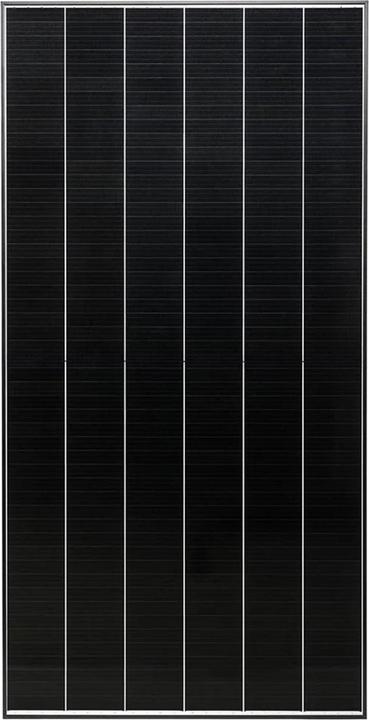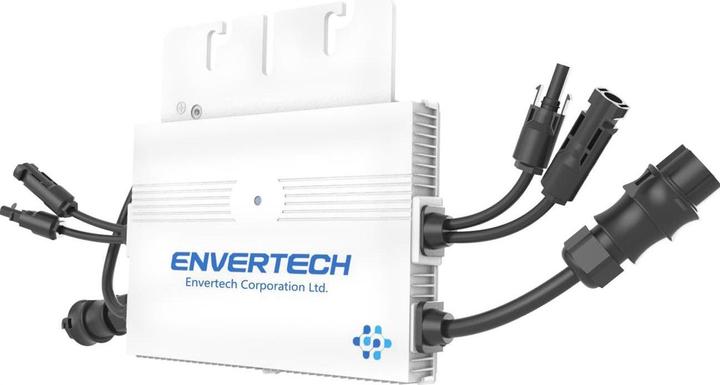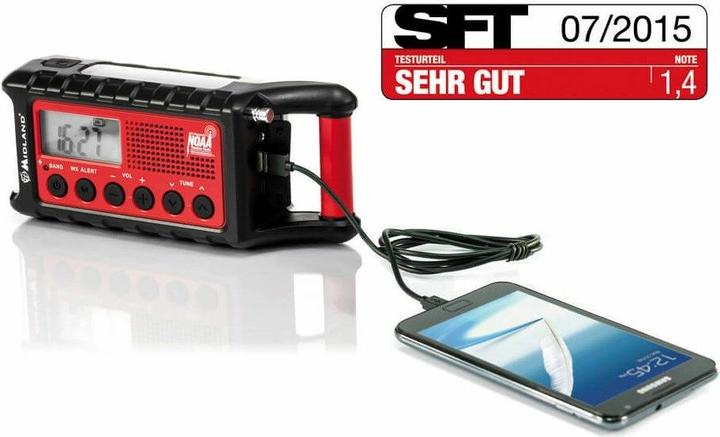

Make your own electricity: tap into the sun with a balcony solar panel
Saving energy will be all the rage for the next few months. Reducing your consumption is one thing, but generating your own electricity is another. Even a small, plug-in solar power system could help you get around an electricity shortfall.
On an almost daily basis, we’re being warned of how tight things could get this winter. Gas is becoming scarce because of Russia’s war in Ukraine, and the heat and drought of summer have served as a tangible reminder of the climate crisis. We should and must save energy, whether it’s by taking shorter showers, switching off devices that have been left on standby or putting a lid on the pot while you’re boiling an egg. The classic stuff. It brings back memories of 1988, when former President of the Swiss Federal Council Adolf Ogi demonstrated on camera how to save electricity in the kitchen.
Saving electricity is good. Making it yourself is even better if it comes from a sustainable source. It’s possible to do this with a small solar power system. I’m not talking about devices that require a complicated roof installation and an expert to hook them up.
Have you got a south-facing balcony? Or a garden shed with a flat roof that catches the sun? And an external socket? Perfect! You’ll be able to install your own solar power system. A so-called balcony kit comes with one or two solar panels, which you mount on your balcony railings or shed roof. You then plug the cable into your external socket. This way, solar power flows into your own electrical grid automatically.
At the time of writing (August 2022), you don’t need a permit to install or connect a mobile system with an output of 600 watts if you live in Switzerland. All you have to do is inform the local electricity supplier. Some suppliers, such as EKZ in the canton of Zurich, even offer subsidies to people installing systems like these (article in German).
A balcony-based solar power system provides enough power for your laptop and lights
With a plug-in solar power system like this, you can generate electricity to run your computer when working from home, charge the battery on your electric bike or switch on the lights. Experts estimate this kind of set-up can cover up to 15 per cent of your electricity needs. However, the energy generated from the sun’s rays isn’t enough to get the dishwasher going or cook pasta. Household appliances require more power. The same goes for a Tesla, by the way. It takes at least 5 times as much power before the charging port even lights up.
There were no solar power systems for balconies available on our shop at the time this article was published. You can, however, activate notifications to find out via e-mail when you’ll be able to order one.
Even so, if your balcony power station is producing electricity, you won’t need to buy much else. Ideally, you’ll turn on your appliances when the sun is shining. To figure out whether your solar power system is working, and how well it’s performing, it’s advisable to get a smart adapter. These are able to tell you via smartphone app, for example, how much power you’re currently producing. With intelligent adapters like these, you can also set your devices to turn on when enough power’s being generated.
Can small solar power systems pave the way to self-sufficiency?
However, there’s one thing these plug-and-play complete systems can’t do. If the supply of power to residences is shut off, you won’t have any electricity at home either. A press inquiry to Zurich electricity provider EKZ explains why. In the event of a power cut, power inverters are automatically turned off too. This is because the power tends to go down when repairs are required. When this happens, the flow of electricity has to be switched off. According to the EZK, power stations connected to the grid are barred from generating any electricity when repair work is being carried out. And if the inverters aren’t working, then there’s no alternating current – the form in which power is delivered to homes and businesses.
Do you need a permit for a balcony-based solar power system?
The answer to this is complicated, because it depends. If you own a single-family house, you’re sitting pretty. In this case, you can practically do whatever you want, as long as you comply with the building regulations in your area. It’s more complicated if you own a condo. If this applies to you, you’d be well advised to look over the standard house rules for your building. Solar panels might not be mentioned in the section on balconies. If that’s the case, you should get the green light from other property owners in the building to avoid any disputes. Tenants should also get the go-ahead from the building owner, especially if installing solar panels would impact the appearance of the building – something that probably applies in most cases.
The legal situation is tricky at the very least. A Swiss Federal Office for Energy (SFOE) pamphlet, for instance, says that portable power stations for generating electricity don’t require a permit. The legal department of the Hauseigentümerverband (Building Owners Association), however, opposes this. The organisation has called for mandatory permits to be introduced as was reported in the newspaper «Tagesanzeiger» – if only for liability reasons.
The building blocks of a balcony-based solar power station
To start generating electricity immediately, you should make sure the complete set you plan to buy contains all the necessary bits and pieces. Or at least find out what you need in order to put your own set together.
Solar panel(s)
You’ll find panels with a nominal power of 250 to 400 watts. It’s not that easy to work out the best price-performance ratio. For simplicity’s sake, you can divide the price by the wattage – like calculating the price per 100 grammes in the supermarket. You’ll realise that the panels with the highest nominal power aren’t usually the cheapest. In this regard, you tend to pay more for a higher output.
What’s more, there are different types of solar panels with different levels of efficiency. Monocrystalline solar cells with 21 to 26 per cent efficiency are widely used. They do well in low light and can even produce a bit of electricity when it’s rainy. Polycrystalline solar cells aren’t as good in that area. Their efficiency level, which, in basic terms, is the proportion of solar energy that’s converted into electricity, is considerably lower at 18 to 21 per cent.
Incidentally, you don’t need to worry about the safety-inspired 600-watt upper limit which regulates how much you’re allowed to produce and/or feed back into the electrical grid. The specification on a solar panel is more of a theoretical figure, which can only really be achieved under very rare, ideal conditions. In other words, a 360-watt solar panel will hardly ever produce 360 watts of power. After all, the great outdoors isn’t a lab, and doesn’t produce the kind of data that comes out of laboratory conditions.
Inverters
This little box converts the direct current generated by the panels into alternating current, which can then be used in the home. Make sure your balcony power plant set includes an inverter. They’re specially designed for small systems. The inverter also tends to regulate the maximum amount of electricity flowing into your circuit. The important thing? If you’re planning on having two panels, your inverter will need to have two connection points.
Inverters are in short supply at the moment (as of the beginning of September 2022). The purchasing team is working on improving the product’s availability.
Connection cables
Solar panels usually have plus and minus terminals on the back with corresponding connectors and slots. These can then be connected to their counterparts on the inverter. If you want to have a bit more separation between the inverter and the solar panels, you might need an extension cable. A suitable cable for hooking up the inverter to the power outlet is usually included in the set. Just be sure that it has a Swiss plug.
If you want to find out how to assemble a solar power system for your balcony, the process is clearly explained in this video. Just click on the wheel icon for English subtitles.
Attaching the panels to your balcony
Any mini solar power system needs to be securely attached to your balcony railings. Even a storm shouldn’t be able to shake them off. That’s why decent, complete sets contain the right material for attaching the panels. Or you’ll receive recommendations on the appropriate kit. C-hooks are recommended for installing panels on a balcony, while angle-adjustable brackets are recommended for mounting panels to the roof of a garden shed.
Is it worth getting a battery for your balcony solar power station?
Having a small solar power system primarily means keeping your electricity bill low. If the sun is shining and your home-produced power is flowing through the plug socket and into your electric grid, you’ll need less electricity from your provider. If you spend your nights in front of a high-spec gaming PC, however, a balcony-based solar power system won’t be much use to you. Unless, that is, you store the electricity you generate during the day in a battery, which you can then use when needed.
There are solar power systems with storage capacity available on the market, and on our shop. However, they tend to be either too expensive or supply too little electricity for you to recoup the cost of investing in one. In this blog post, this is calculated with an example based on Germany’s higher electricity prices (article in German). This means the numbers are even worse for Switzerland. After all, since electricity is so cheap in this country, it’s not worth storing it in expensive batteries.
Incidentally, you won’t get any money back from the electricity company, as the electricity you use doesn’t go back into the grid. The EKZ, for instance, says that plug-in solar power systems deliver so little power that the administrative effort isn’t worth their while. Basically, systems like this are supposed to be for individual use.
With this in mind, getting a home battery wouldn’t be very economical. The amount of electricity produced by one or two panels on the balcony railing is far too low. That said, if you reckon an energy shortage is serious enough for the power supply to residential areas to be shut off (as mentioned in the Swiss action plan, being economical might not be your biggest motivation. If you’re the prepper type, you’ll come up trumps with a home battery, as your place will be the last to go dark. As long as the battery lasts, that is.
If you’re less pessimistic, candles, torches, a radio and some suitable batteries will be enough to get you well equipped. Alternatively, you can go for a battery-free device that combines all of that in one.
Speaking of which, if you’re genuinely interested in home batteries, I’d recommend reading Carolin’s comprehensive article on power stations.
*Got any questions about mini solar power systems? Feel free to post your question in the comments section below. If you’ve used a system like this already, the Community would love to hear about your experience.
Journalist since 1997. Stopovers in Franconia (or the Franken region), Lake Constance, Obwalden, Nidwalden and Zurich. Father since 2014. Expert in editorial organisation and motivation. Focus on sustainability, home office tools, beautiful things for the home, creative toys and sports equipment.
Practical solutions for everyday problems with technology, household hacks and much more.
Show all








